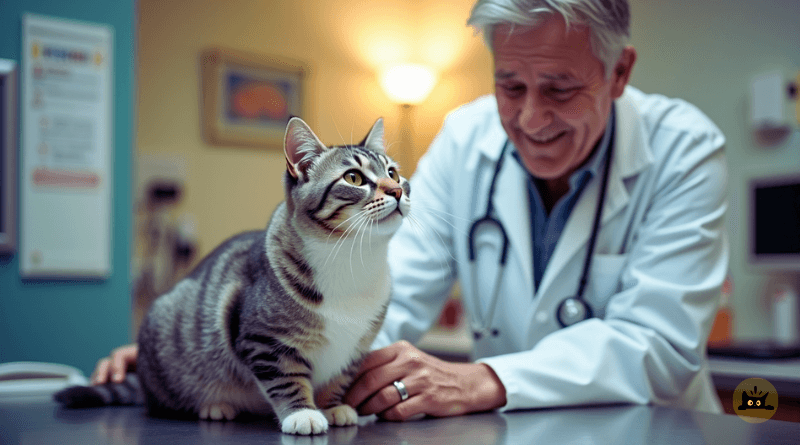Cat Heartworm Disease is an often overlooked yet serious health threat for our feline friends. Although heartworm infections occur more frequently in dogs, even a few worms can lead to significant health complications in cats. By understanding the disease, its symptoms, and the ways to prevent it, you can better protect your pet and ensure a healthier life together.
What is Cat Heartworm Disease?
Cat Heartworm Disease is caused by the parasitic worm Dirofilaria immitis. When a mosquito carrying the heartworm larvae bites your cat, the parasite enters the bloodstream. In cats, even a minimal infection can trigger an aggressive immune response. This reaction often results in inflammation of the lungs, respiratory distress, and sometimes a condition known as heartworm-associated respiratory disease. Unlike in dogs, the number of worms in cats is usually very low, making the diagnosis and treatment more challenging.
How Do Cats Get Heartworm?
The main mode of transmission of Cat Heartworm Disease is through mosquito bites. Although cats are naturally fastidious groomers, their self-cleaning habits cannot protect them completely from mosquito exposure. Whether your cat lives mainly indoors or enjoys outdoor adventures, there is always a risk of exposure—especially during the warmer months when mosquitoes are most active. Even a single bite is enough to introduce the larvae into your pet’s system, highlighting the importance of rigorous preventive measures.
Common Symptoms to Watch For
Because of the low worm count in infected cats, the symptoms of Cat Heartworm Disease can be subtle yet dangerous. Look out for these signs in your pet’s daily behavior:
• Coughing – A dry, persistent cough that may become more frequent after physical activity. • Difficulty Breathing – Labored breathing or rapid breaths, especially noticeable during or after playtime. • Loss of Appetite – A sudden decrease in interest in food accompanied by reduced energy levels. • Vomiting or Retching – Occasional vomiting or persistent retching that might seem like a stomach upset. • Lethargy – A marked drop in activity, with your cat showing signs of unexplained fatigue.
Recognizing these symptoms early and keeping a record of any changes can prove invaluable. Early detection and intervention can significantly improve treatment outcomes.
What to Do If You Suspect Heartworm
If you notice any signs that might indicate Cat Heartworm Disease, it’s important to act quickly. Follow these clear steps:
- Schedule a Veterinary Appointment – Contact your veterinarian immediately to discuss the symptoms and any possible exposure to mosquitoes.
- Follow Testing Recommendations – Your vet may recommend blood tests, chest X-rays, or ultrasounds to detect the disease. Although diagnosing heartworm in cats is more challenging than in dogs, professional diagnostic procedures are essential.
- Use Preventive Medications – If your cat is at risk, your veterinarian might prescribe heartworm preventives designed specifically for cats. Always follow the prescribed regimen and avoid using over-the-counter products.
- Monitor Your Cat Daily – Keep a detailed log of any new or worsening symptoms. This information is critical for your veterinarian when determining the diagnosis and the next steps for treatment.
Prevention is the Best Medicine
Preventing Cat Heartworm Disease is much simpler and safer than treating an established infection. Consider these practical measures to reduce your cat’s risk:
• Reduce Mosquito Exposure – Ensure that your home is as mosquito-free as possible by using secure window screens and eliminating standing water around your property. • Limit Outdoor Activity During Peak Hours – Keep your cat indoors during early mornings and late evenings when mosquitoes are most active. • Vet-Approved Preventives – Consult your veterinarian for preventive medications that are specifically formulated for cats. Regular use of these preventives can drastically lower the risk of infection. • Routine Veterinary Check-Ups – Regular check-ups allow your veterinarian to detect any early signs of Cat Heartworm Disease or other health issues. Early intervention often makes treatment much more effective.
Final Thoughts
Being a proactive pet owner means staying informed about all potential health risks, even those that may seem uncommon. Although Cat Heartworm Disease does not affect cats as frequently as dogs, the impact on a cat’s health can be severe if left undetected and untreated. By familiarizing yourself with the early symptoms—such as coughing, difficulty breathing, or lethargy—and adopting preventive measures, you provide the best protection for your pet.
Maintain open communication with your veterinarian, especially during mosquito season, and keep up with regular health check-ups. A proactive approach not only helps ensure prompt treatment but also gives you peace of mind knowing you’ve taken vital steps to safeguard your pet’s well-being.
Explore more articles in this category for expert pet advice : Worried About Cat Nail Trimming? Learn What to Watch For
Sources : Pet Poison Helpline, Veterinary Information Network, The Kennel Club

